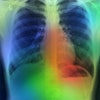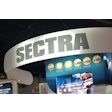CLEVELAND - Freedom from fixed imaging workstations would be a boon to all healthcare professionals. For referring physicians and ward clinicians in particular, the idea of receiving radiological images on a wireless device such as a tablet PC or a personal digital assistant is downright enticing. But important technological issues remain to be solved before widespread adoption of roaming access can occur.
"The security of wireless networking is absolutely worthless," said Dr. Paul Chang during a presentation at the 19th Symposium for Computer Applications in Radiology. Chang, director of the division of radiology informatics at the University of Pittsburgh Medical Center in Pittsburgh, has been studying the various flavors of wireless networking in an effort to implement the technology for radiology exam and image distribution.
"We’ve been using a tablet PC as a receiving device, but it has a couple of inherent limitations," Chang said. "One, the form factor is too large, as the device won’t fit in a pocket. And two, the power supply is inadequate for clinical use, the battery life is only about 90 minutes, at best."
Wireless networking comes with a cafeteria of options. Available transmission methodologies include infrared, microwave, and radio wave, and depending on the implementation, can be used for wireless LANs, broadband, or personal-area networks. Several protocols are also available for transmission.
Most home wireless networks employ the 802.11b protocol, which operates in the 2.45 GHz frequency, achieves about 5 Mb per second transmission speeds, and can roam as far as 300 feet from an access point. However, because users communicating with a single access point must share bandwidth, the potential for overloading the node becomes very real in a crowded hospital setting. Also, current implementations use a single key, Wired Equivalent Privacy, which has serious security vulnerabilities.
Two other flavors of the 802.11 protocol, a and g, have been examined by Chang and his team for their potential. The 802.11a protocol operates in the 5 GHz frequency range and achieves transmission speeds of about 32 Mb per second, with a distance limitation of 200 feet from its access point. The greater bandwidth available to clients makes it a more attractive option; however, it is more expensive to implement and would require more node points because of its distance limitations.
The 802.11g protocol, still in test trials, has also been reviewed by the research team. Like 802.11b, it operates at 2.45 GHz but is expected to achieve bandwidth of 12 to 15 Mb, with the possibility of a roaming range extending beyond 300 feet. Although 802.11g promises better security than 802.11b, security is still not enterprise strength, according to Chang. It is also more expensive than the shorter-range alternative.
Chang cautioned that early clinical adopters of wireless services should act with prudence, and that administrators should utilize security protocols such as the Temporal Key Integrity Protocol or Advanced Encryption Standard on their wireless networks. In addition, only static IP addresses should be used, which will hinder intrusion by an unauthorized wireless device.
"I would not deploy a wireless network in a hospital setting without a very robust security package in place," he emphasized.
Chang also recommended that no important servers or clients should be on a wireless LAN, and that firewall protection be employed for all systems accessible by wireless users. He urged the audience to not use the default setting of the Extended Service Set Identifier, as any wireless device set to "default" can gain access to that network.
Finally, for developers who may have their hearts set on wireless delivery of multimedia objects such as radiological images, he offered the following suggestion: "Since wireless networking applications that require large data block transfers are not desirable via a shared resource, consider using just-in-time mechanisms to deliver medical images."
By Jonathan S. BatchelorAuntMinnie.com staff writer
May 6, 2002
Copyright © 2002 AuntMinnie.com

















